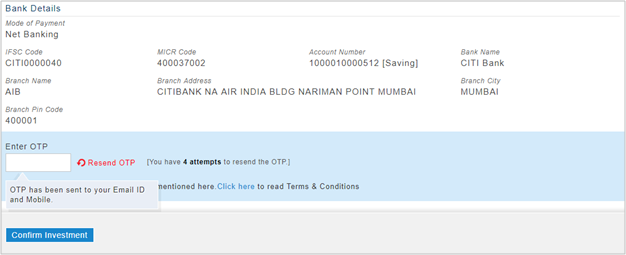Demand Pull Inflation Definition, Example, Causes
Contents
Additionally, with further regard to taxes, governments can hedge the economy against hyperinflation. By saving up a portion of money raised from taxes, a sovereign entity can develop a safety fund for when it must raise interest rates to fend off hyperinflation. With higher interest rates comes a drop in economic activity, but this is where the safety fund comes in handy as a tool to aid the economy. Countering demand-pull inflation would be achieved by the government and central bank implementing contractionary monetary and fiscal policies. Looking again at the price-quantity graph, we can see the relationship between aggregate supply and demand.

Higher VAT and Excise duties will increase the prices of goods. In western economies food is a smaller % of overall spending, but in developing countries, it plays a bigger role. It may be noted that rise in prices of raw materials, especially of energy inputs (petroleum products) which have a cost push effect are also called supply shocks. The third scenario probably the most likely, but we do not know for sure unless we have some equations or data to base it on. So the real answer here is that inflation caused by an increase in wages is a double whammy of both demand-pull and cost-push inflation, we cannot blame it on one source.
With anticipated inflation, people can build up their strategies to cope with inflation. Finally, production setbacks may result in decreases in output. https://1investing.in/ Natural disaster, gradual exhaustion of natural resources, work stoppages, electric power cuts, etc., may cause aggregate output to decline.
Business objectives
AD represents aggregate demand for or aggregate expenditure on goods and services which is composed of consumption demand and investment demand . M stands for quantity of money and P for the price level. There is excessive monetary growth, when there is too much money in the system chasing too few goods. Increase in prices raw materials, especially energy inputs such as rise m crude oil prices.
The study tools and academic assistance/guidance through online tutoring sessions provided by AssignmentHelp.Net is to help and enable students to compete academically. The website does not provide ghostwriting services and has ZERO TOLERANCE towards misuse of the services. In case any user is found misusing our services, the user’s account will be immediately terminated. There can be many reasons due to which the demand for a commodity increase. While not directly related to economics, probabilities and statistics are used in economics qu…

We are dedicated to providing you with the very best in economics knowledge, with an emphasis on microeconomics and macroeconomics. Our mission is to provide an online platform to help students to discuss anything and everything about Economics. This website includes study notes, research papers, essays, articles and other allied information submitted by visitors like YOU. Thus, there occurs a redistribution of income and wealth. It is said that rich becomes richer and poor becomes poorer during inflation. However, no such hard and fast generalisation can be made.
Countering Cost Push Inflation
Below the full employment stage, inflation has a favourable effect on production. In general, profit is a rising function of the price level. An inflationary situation gives an incentive to businessmen to raise prices of their products so as to earn higher volume of profit. Rising price and rising profit encourage firms to make larger investments. Another factor can be the depreciation of local exchange rates, which raises the price of imports and, for foreigners, reduces the price of exports. As a result, the purchasing of imports decreases while the buying of exports by foreigners increases.

Advertising spending is one of those ambiguous areas of supply and demand theory where we don’t really know exactly what will happ… Inflation is a general rise in the average level of prices, sustained over time. Using that percentage as a barometer allows the Fed to make monetary decisions diagram of demand pull inflation that hopefully boost the economy when necessary. The Great Recession was partly caused by a collapse of a bubble in U.S. real estate prices. One of the dynamics that inflated the real estate bubble in the first place was the rapid increase in the popularity of mortgage-backed securities .
The most common type of inflation is demand-pull inflation. Consumers have better jobs and salaries, factors backed by inflationary principles. When demand for goods or services rises faster than the supply of those goods and services, the result is demand-pull inflation. The interplay of supply and demand helps set the prices of goods and services in an economy. Too little supply or too much demand can mean higher prices for everybody. On the other hand, structuralists believed that the inflation occurs because of the unbalanced economic system and they used both monetary and fiscal measures together for sorting out economic problems.
To the best of our knowledge, all content is accurate as of the date posted, though offers contained herein may no longer be available. The opinions expressed are the author’s alone and have not been provided, approved, or otherwise endorsed by our partners. Treasury bonds is designed specifically to help protect investors from inflation. By using CPI changes to adjust your investment’s value automatically. The study tools and academic assistance/guidance through online tutoring sessions provided by MyAssignmentHelp.Net is to help and enable students to compete academically. Let us study the different types of structural theories of inflation (as shown in Figure-4) in detail in the next sections.
Causes of Demand-Pull Inflation
Keynesian economics comprise a theory of total spending in the economy and its effects on output and inflation, as developed by John Maynard Keynes. On the other hand, this could harm importers by making foreign-made goods more expensive. Higher inflation can also encourage spending, as consumers will aim to purchase goods quickly before their prices rise further. Savers, on the other hand, could see the real value of their savings erode, limiting their ability to spend or invest in the future. Demand-pull and cost-push inflation move in practically the same way but they work on different aspects of the system. Demand-pull inflation demonstrates the causes of price increases.
- This increase in price is what causes inflation in an overheating economy.
- Though inflation did rise to around 3.3%, housing prices rose, further enhancing the drop.
- The study tools and academic assistance/guidance through online tutoring sessions provided by AssignmentHelp.Net is to help and enable students to compete academically.
- It may also be classified in accordance with the reactions of the government toward inflation.
They state that both the forces operate simultaneously and independently in an inflationary process. Thus, mixed inflation is when change in price level is a result of change in both aggregate demand and aggregate supply functions. Such increases in costs are passed on to consumers by firms by raising the prices of the products. And, rising prices again prompt trade unions to demand higher wages.
Due to capacity constraints, this increase in output will eventually become so small that the price of the good will rise. At first, unemployment will go down, shifting AD1 to AD2, which increases demand (noted as “Y”) by (Y2 − Y1). This increase in price is what causes inflation in an overheating economy. Another reason for an increase in demand can be discretionary fiscal policy. Whenever government spending rises, it leads to an increase in the aggregate demand and therefore driving the aggregate demand curve forward.
thoughts on “Demand-pull inflation”
Supply CurveSupply curve represents the relationship between quantity and price of a product which the supplier is willing to supply at a given point of time. It is an upward sloping curve where the price of the product is represented along the y-axis and quantity on the x-axis. There can be many reasons due to which the prices of inputs increase. The GoCardless content team comprises a group of subject-matter experts in multiple fields from across GoCardless. The authors and reviewers work in the sales, marketing, legal, and finance departments.
What Causes Demand-Pull Inflation?
Now, if the aggregate demand increases to AD2, price level rises to OP2 due to the emergence excess of demand at price level OP1. Now that as a result of increase in aggregate demand price level has actually risen to P1, workers’ real wages would decline. Demand-pull inflation happens when aggregate demand increases in an economy and intersects the short run aggregate supply curve to the right of where SRAS and long run aggregate supply cross. This causes some inflation to occur in the short run, and even more in the long run as the economy adjusts . As the government takes measures to increase employment level in the economy, income level rises and causes a shift in the demand curve from AD0 to AD1. The new equilibrium point is E2 where the rise in price is P2.
When supply cannot meet growing demand, prices for goods and services are pulled higher. Another variant of cost-push inflation is called the supply shock. Unexpected increases in raw materials or energy inputs (eg petroleum, coal, etc.) may increase the cost of production and result in higher commodity prices and inflation.
Before joining Dotdash, she consulted for a global financial institution on cybersecurity policies and conducted research as a Research Analyst at the Belfer Center for Science and International Affairs. Demand-pull inflation can be compared with cost-push inflation. Thank you for the clarifications, i benefited more.MAY YOU further on explain ways to curb unemployment with illustrative diagrams.


